Not all vacuum cleaners are the same – in fact there’s a plethora of options: Barrel, upright, handheld and robot vacuum cleaners to name a few of the most common. But aside from suction cleaning, these vacuum cleaners all have one thing in common – they all use electricity, and electricity costs money.
In this article, Canstar Blue takes a close look at just how much electricity different types of vacuum cleaners use, and what this adds to your electricity bill.
On this page:
How much does it cost to use a barrel vacuum cleaner?
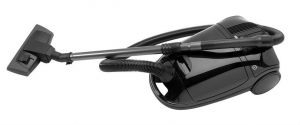 A barrel vacuum cleaner will cost between 4.39c and 13.16c for every 10 minutes it’s used, according to Canstar Blue data. This however, will greatly depend on the rate you pay for electricity usage, as well as the power of your vacuum. Vacuum cleaner power is measured in watts and will usually vary between 800W and 2400W. The greater the wattage, the more powerful the vacuum and the more it costs you in electricity.
A barrel vacuum cleaner will cost between 4.39c and 13.16c for every 10 minutes it’s used, according to Canstar Blue data. This however, will greatly depend on the rate you pay for electricity usage, as well as the power of your vacuum. Vacuum cleaner power is measured in watts and will usually vary between 800W and 2400W. The greater the wattage, the more powerful the vacuum and the more it costs you in electricity.
In the table below, we have broken down the cost of using a barrel vacuum cleaner for 10 minutes, for an hour and for an entire year (assumed use twice per week for 20 minutes).
← Mobile/tablet users, scroll sideways to view full table →
| Vacuum Power | Cost per 10 minutes | Cost per hour | Annual energy cost |
|---|---|---|---|
| 800W | 4.39c | 26.32c | $9.12 |
| 1000W | 5.48c | 32.90c | $11.41 |
| 1200W | 6.58c | 39.48c | $13.69 |
| 1600W | 8.77c | 52.64c | $18.25 |
| 1800W | 9.87c | 59.22c | $20.53 |
| 2000W | 10.97c | 65.80c | $22.81 |
| 2200W | 12.06c | 72.38c | $25.09 |
| 2400W | 13.16c | 78.96c | $27.37 |
Source: www.canstarblue.com.au – 18/10/2023. Average electricity usage rates are based on single rate, non-solar only plans on Canstar’s database, available for an annual usage of 4,347kWh. Electricity usage cost estimates based on the average electricity usage rate of 32.9c/kWh. Annual costs assume 20 minutes of use, twice per week.
As you can see, using a vacuum cleaner could be a costly appliance if it were used more often. Since a lot of us usually don’t use a vacuum cleaner more than an hour per week, it’s unlikely that the vacuum cleaner has a significant contribution to your electricity bill. But it still pays to be in the know!
How much does it cost to use an upright vacuum cleaner?
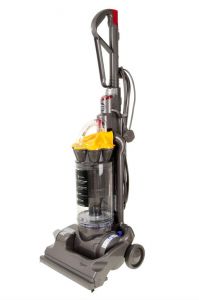
Upright vacuum cleaners cost between 2.74c and 7.68c in electricity usage every 10 minutes, according to Canstar Blue data. They are slightly weaker than barrel vacuum cleaners and consequently use less electricity – generally between 500W and 1400W. This also makes upright vacuum cleaners cheaper to run.
← Mobile/tablet users, scroll sideways to view full table →
| Vacuum Power | Cost per 10 minutes | Cost per hour | Annual energy cost |
|---|---|---|---|
| 500W | 2.74c | 16.45c | $5.70 |
| 700W | 3.84c | 23.03c | $7.98 |
| 750W | 4.11c | 24.68c | $8.55 |
| 800W | 4.39c | 26.32c | $9.12 |
| 1200W | 6.58c | 39.48c | $13.69 |
| 1300W | 7.13c | 42.77c | $14.83 |
| 1400W | 7.68c | 46.06c | $15.97 |
Source: www.canstarblue.com.au – 18/10/2023. Average electricity usage rates are based on single rate, non-solar only plans on Canstar’s database, available for an annual usage of 4,347kWh. Electricity usage cost estimates based on the average electricity usage rate of 32.9c/kWh. Annual costs assume 20 minutes of use, twice per week.
How much do handheld vacuum cleaners cost to use?
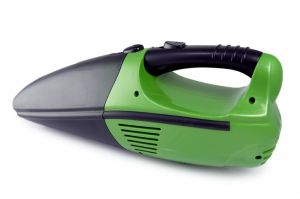 Most handheld vacuum cleaners are cordless and will cost between 0.13c and 0.49c each time to charge, according to Canstar Blue data. Other handheld vacuums have a cord and will generally cost you more in electricity – around 0.22c to 0.44c per minute of use. Again, this depends on the rate you pay on electricity.
Most handheld vacuum cleaners are cordless and will cost between 0.13c and 0.49c each time to charge, according to Canstar Blue data. Other handheld vacuums have a cord and will generally cost you more in electricity – around 0.22c to 0.44c per minute of use. Again, this depends on the rate you pay on electricity.
The table below represents the running costs of both cordless and corded handheld vacuum cleaners of various powers. Cordless handheld vacuum cleaners are powered by a rechargeable battery. The battery’s capacity is measured in milli-amp hours (mAh), while the portable vacuum’s power is measured in volts (V).
Cordless handheld vacuum running costs
← Mobile/tablet users, scroll sideways to view full table →
| Battery capacity | Voltage | Cost to fully charge | Annual energy cost |
|---|---|---|---|
| 400mAh | 10.0V | 0.13c | 20.53c |
| 500mAh | 14.4V | 0.24c | 36.95c |
| 650mAh | 16.0V | 0.34c | 53.38c |
| 700mAh | 18.0V | 0.41c | 64.67c |
| 800mAh | 18.8V | 0.49c | 77.19c |
Source: www.canstarblue.com.au – 18/10/2023. Average electricity usage rates are based on single rate, non-solar only plans on Canstar’s database, available for an annual usage of 4,347kWh. Electricity usage cost estimates based on the average electricity usage rate of 32.9c/kWh. Annual usage assumes cordless handheld vacuum is charged from 0% to 100% three times per week.
Corded handheld vacuum cleaner running costs
← Mobile/tablet users, scroll sideways to view full table →
| Vacuum Power | Cost per minute | Cost per hour | Annual energy cost |
|---|---|---|---|
| 400W | 0.22c | 13.16c | $2.28 |
| 500W | 0.27c | 16.45c | $2.85 |
| 600W | 0.33c | 19.74c | $3.42 |
| 700W | 0.38c | 23.03c | $3.99 |
| 800W | 0.44c | 26.32c | $4.56 |
Source: www.canstarblue.com.au – 18/10/2023. Average electricity usage rates are based on single rate, non-solar only plans on Canstar’s database, available for an annual usage of 4,347kWh. Electricity usage cost estimates based on the average electricity usage rate of 32.9c/kWh. Annual costs assume 10 minutes of use, twice per week.
A cordless handheld vacuum cleaner has a small battery capacity relative to its high voltage, meaning its charge usually won’t last long – around 10 to 30 minutes. Broadly speaking, corded models are more powerful than cordless vacuum cleaners, but will consequently cost a little more to run. That said, the running costs of handheld vacuum cleaners make a rather minimal contribution to your electricity.
Compare cheap electricity plans
Here are some of the cheapest published deals from the retailers on our database that include a link to the retailer’s website for further details. These are products from referral partners†. These costs are based on the Ausgrid network in Sydney but prices may vary depending on your circumstances. This comparison assumes general energy usage of 3900kWh/year for a residential customer on a single rate tariff. Please use our comparison tool for a specific comparison in your area. Our database may not cover all deals in your area. As always, check all details of any plan directly with the retailer before making a purchase decision.
Here are some of the cheapest published deals from the retailers on our database that include a link to the retailer’s website for further details. These are products from referral partners†. These costs are based on the Citipower network in Melbourne but prices may vary depending on your circumstances. This comparison assumes general energy usage of 4000kWh/year for a residential customer on a single rate tariff. Please use our comparison tool for a specific comparison in your area. Our database may not cover all deals in your area. As always, check all details of any plan directly with the retailer before making a purchase decision.
Here are some of the cheapest published deals from the retailers on our database that include a link to the retailer’s website for further details. These are products from referral partners†. These costs are based on the Energex network in Brisbane but prices may vary depending on your circumstances. This comparison assumes general energy usage of 4600kWh/year for a residential customer on a single rate tariff. Please use our comparison tool for a specific comparison in your area. Our database may not cover all deals in your area. As always, check all details of any plan directly with the retailer before making a purchase decision.
Here are some of the cheapest published deals from the retailers on our database that include a link to the retailer’s website for further details. These are products from referral partners†. These costs are based on the SA Power network in Adelaide but prices may vary depending on your circumstances. This comparison assumes general energy usage of 4000kWh/year for a residential customer on a single rate tariff. Please use our comparison tool for a specific comparison in your area. Our database may not cover all deals in your area. As always, check all details of any plan directly with the retailer before making a purchase decision.
How much does it cost to use a robot vacuum cleaner?
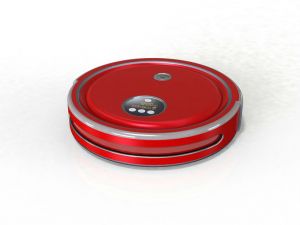 Robot vacuum cleaners will cost between 0.83c and 2.53c each time to charge, according to Canstar Blue data. Robot vacuums use rechargeable batteries. Again, battery capacity is measured in milli-amps (mAh) while its power is measured in volts (V). Battery capacity varies considerably. Certain lower end models are less powerful and have smaller batteries, meaning they don’t last as long, but are slightly cheaper to charge.
Robot vacuum cleaners will cost between 0.83c and 2.53c each time to charge, according to Canstar Blue data. Robot vacuums use rechargeable batteries. Again, battery capacity is measured in milli-amps (mAh) while its power is measured in volts (V). Battery capacity varies considerably. Certain lower end models are less powerful and have smaller batteries, meaning they don’t last as long, but are slightly cheaper to charge.
← Mobile/tablet users, scroll sideways to view full table →
| Battery capacity | Voltage | Cost to fully charge | Annual cost |
|---|---|---|---|
| 1800mAh | 14.0V | 0.83c | $3.02 |
| 2200mAh | 14.0V | 1.01c | $3.69 |
| 2600mAh | 14.4V | 1.23c | $4.48 |
| 3000mAh | 14.4V | 1.42c | $5.17 |
| 4800mAh | 14.8V | 2.34c | $8.51 |
| 5200mAh | 14.8V | 2.53c | $9.22 |
Source: www.canstarblue.com.au – 18/10/2023. Average electricity usage rates are based on single rate, non-solar only plans on Canstar’s database, available for an annual usage of 4,347kWh. Electricity usage cost estimates based on the average electricity usage rate of 32.9c/kWh. Annual usage assumes robot vacuum is charged from 0% to 100% seven times per week.
This table shows that robot vacuum cleaners are considerably cheaper to operate than manual cleaners. While that is technically true, bear in mind that many models of robot vacuum cleaners are not powerful enough to completely replace a barrel or upright vacuum cleaner. A robot vacuum cleaner may reduce how often you need to vacuum, but it probably won’t eliminate the need entirely.
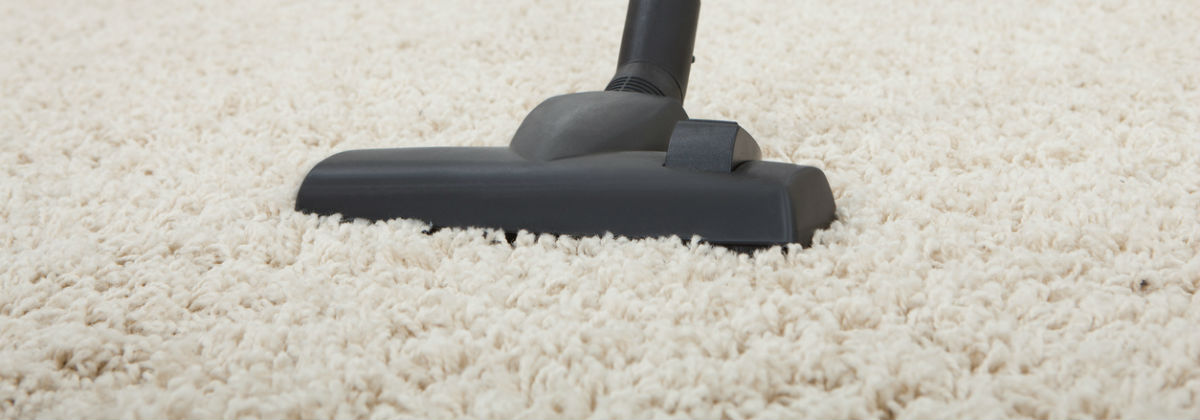



Share this article